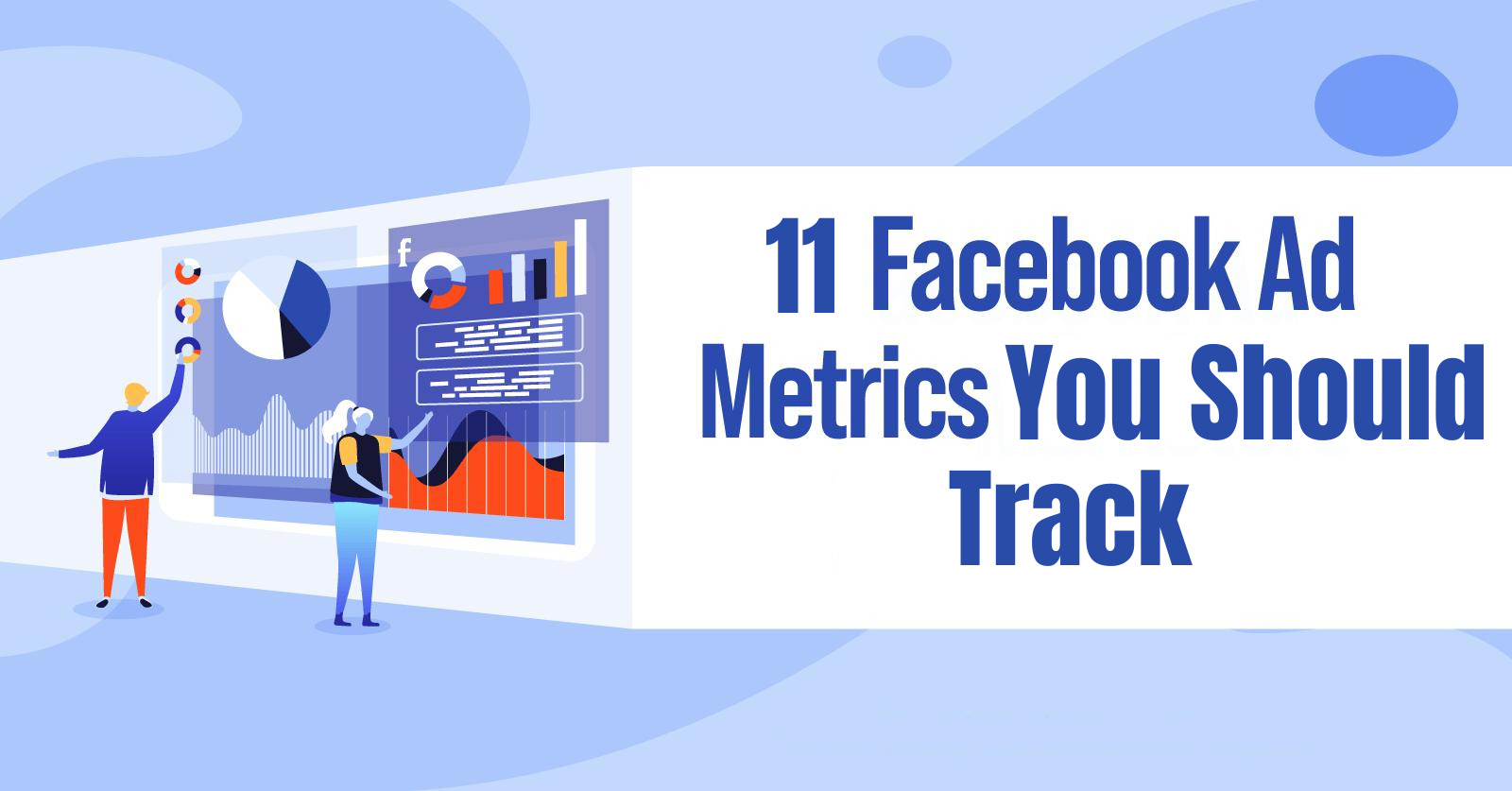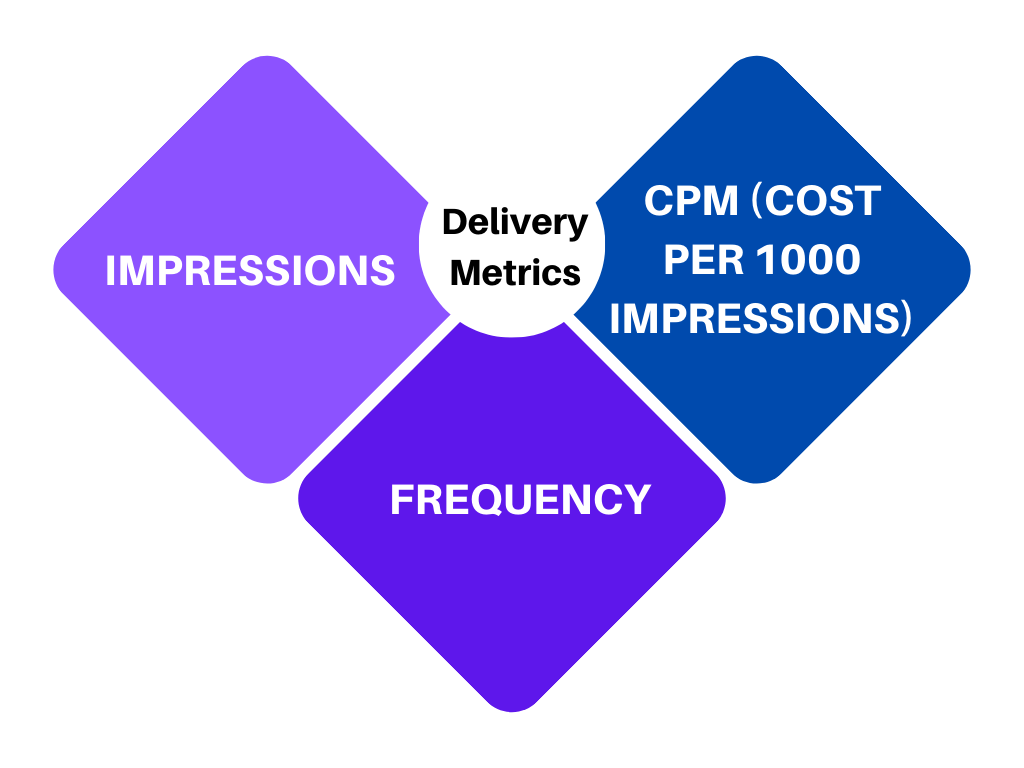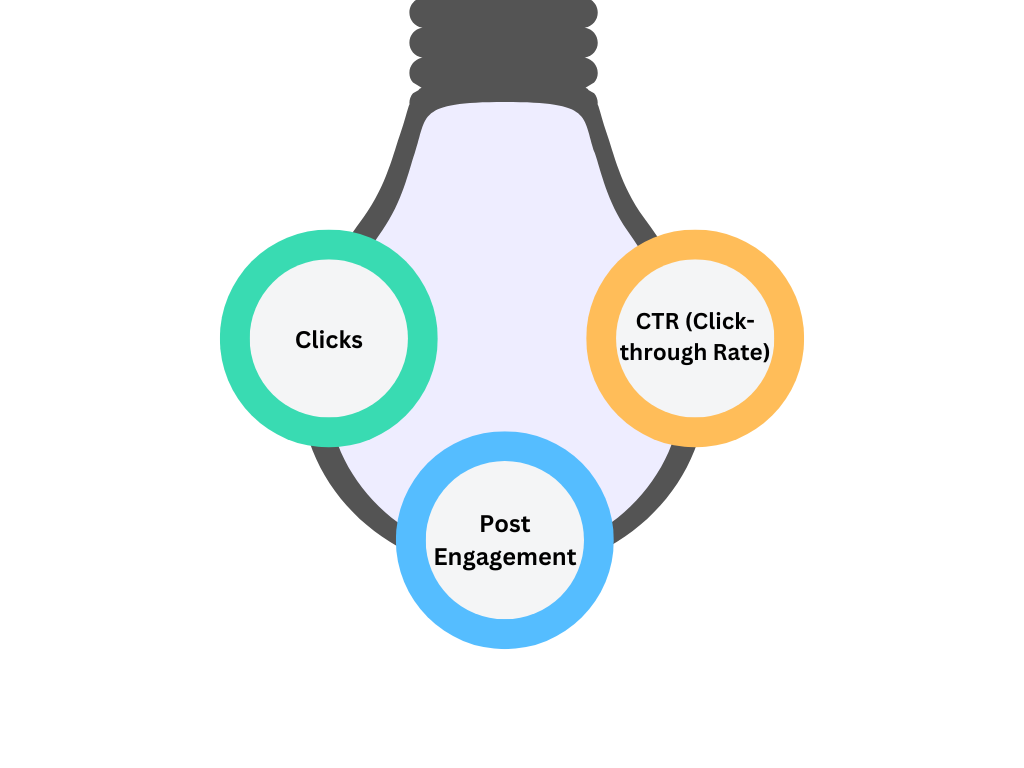
It’s important to measure the effectiveness of your Facebook advertising campaigns to ensure you’re reaching your desired audience and achieving your marketing goals. Facebook offers a wide range of metrics that can be tracked to help you monitor the performance of your ads.
The blog will provide a closer look at 11 Facebook ads metrics that you should be tracking.
The metrics can be grouped into three categories:
- Performance Metrics
- Delivery Metrics
- Engagement Metrics.
Let’s dive into each of these groups and explore the Facebook ads metrics that fall under each.
11 Facebook Ads Metrics
Performance Metrics
Performance Metrics are a set of metrics used to measure the success of Facebook Ads campaigns in achieving their desired outcome. The metrics in this category include:
- Results
- Cost per Result
- Result Rate (Conversion Rate)
- Spend
- ROAS (Return on Ad Spend).
By tracking these metrics, advertisers can evaluate the effectiveness of their campaigns and optimize them accordingly.

1. Results
Results are a crucial metric to track the success of your Facebook Ads campaign. It represents the total number of times your campaign achieved its desired outcome. The specific result may vary depending on the type of campaign and the goal you have set, such as:
- Website purchases
- Leads
- Form leads
- Custom conversions like webinar signups or free trials.
It is essential to determine your target result and monitor it under the Results metric to evaluate the effectiveness of your campaign.
2. Cost per Result
- Cost per Result is a key metric to evaluate the cost-effectiveness of your Facebook Ads campaign. It calculates how much each desired result or action costs and is measured by the formula Total Ad Spend divided by the number of Results.
- This metric is similar to “Cost Per Action” or CPA in other PPC channels, and the result can be a new signup, sale, or form submission depending on the campaign’s goal. CPA is a crucial Facebook Ads metric, which varies significantly by industry and can range from $7.85 in the Education sector to $55 in the Tech industry.
- By tracking your CPA, you can determine the success of your campaign and optimize it accordingly.
3. Result Rate (Conversion Rate)
- Result Rate, also known as Conversion Rate in other digital advertising platforms, is the percentage of desired results achieved compared to the total number of impressions. This metric is used when the “Result” is a lead or action.
- It is calculated by dividing the number of results by the number of impressions.
4. Spend
- Spend is a critical metric that shows the total amount spent on your Facebook Ads during a selected time period.
- It is crucial to track and include in a marketing client dashboard to monitor the PPC budget and ensure that it is within the allotted amount.
- However, to determine the effectiveness of your campaign, it is also necessary to monitor other cost metrics like Cost Per Result and ROAS, which help to generate positive returns.
5. ROAS (Return on Ad Spend)
- ROAS (Return on Ad Spend) is a critical metric to measure the success of a Facebook Ads campaign.
- It shows the amount of revenue a company generates for every $1 spent on ads.
- The formula for calculating ROAS is Revenue divided by Ad Spend.
- You can track ROAS directly in Facebook Ads for eCommerce campaigns using the Facebook Pixel.
- However, for other campaigns, you’ll need to calculate it based on the conversion value of each result achieved.
Delivery Metrics
Delivery metrics are Facebook Ads metrics that measure how your ads are delivered and how they reach your target audience. They help you to optimize the delivery of your ads to improve their performance. Delivery Metrics include:
- Impressions
- CPM (Cost Per 1000 Impressions)
- Frequency
By monitoring these delivery metrics, you can optimize your ad delivery to reach your target audience effectively and efficiently.

6. Impressions
- Impressions refer to the number of times your ads were displayed on the screen in front of your target audience.
- It is a key metric for measuring brand awareness.
- However, impressions should not be confused with Reach, which refers to the number of unique people who saw your ad.
- For example, if one person saw your ad five times, it would count as five impressions, but only one reach.
- It’s also important to analyze impressions across different publishing platforms to determine where your ads are appearing most frequently.
7. CPM (Cost Per 1000 Impressions)
- CPM (Cost per Mille) is the cost for 1000 impressions and is a useful metric for comparing costs across different ad publishers and campaigns.
- It’s also helpful in understanding pricing fluctuations for your chosen placement in Facebook Ads, which operates on an auction system.
8. Frequency
- Frequency measures the average number of times a person has seen your ad and is especially important for narrow, targeted audiences.
- To avoid oversaturating your audience, it’s important to expand your reach if a person has seen your ad too many times.
Engagement Metrics
The last group of metrics that you should be tracking for your Facebook Ads campaign is engagement metrics. These metrics help you understand how your audience is interacting with your ads and content. Here are the engagement metrics you should track:
- Clicks
- CTR (Click-through Rate)
- Post Engagement
By tracking these engagement metrics, you can better understand how your audience is interacting with your ads and adjust your campaigns accordingly to improve their performance.

9. Clicks
- Clicks are the number of times people have clicked your ad’s link.
- It’s a crucial metric to determine if your ad is engaging and driving conversions.
- Pay attention to “Clicks (Link)” rather than “Clicks (All)” since the former focuses on clicks that lead to conversions.
10. CTR (Click-through Rate)
- CTR (Click-through Rate) is also known as the ratio of clicks to impressions.
- While clicks alone can be misleading, CTR is an important metric that shows how engaging your ads are relative to the number of impressions.
11. Post Engagement
- Post Engagement is the total number of reactions, comments, shares, and clicks that post received.
- It’s an important metric to determine how well your ad appeals to your target audience, especially when A/B testing multiple ad types.
- You can also break down engagement types by looking at “Post Comments” and “Post Reactions.”
Conclusion
Tracking the effectiveness of your Facebook advertising campaigns is crucial for ensuring you reach your desired audience and achieve your marketing goals. Facebook offers a variety of metrics that can be grouped into three categories: performance, delivery, and engagement. By monitoring metrics such as Results, Cost per Result, and ROAS, you can evaluate the success of your campaign and optimize it accordingly.
Delivery metrics like Impressions, CPM, and Frequency can help you measure brand awareness and compare costs across different ad publishers and campaigns. Engagement metrics such as Clicks, CTR, and Post Engagement can help you determine how well your ad appeals to your target audience and drive conversions.
By tracking these metrics, you can better understand the performance of your Facebook Ads and make data-driven decisions to improve your advertising strategy.
Furthermore, you can check the trending queries to optimize your google ads.

